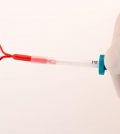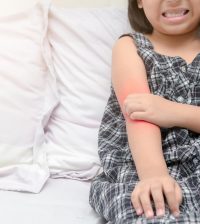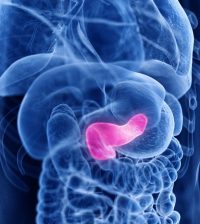- Study Suggests Earlier Is Better for Heart Valve Replacement Procedures
- Bird Flu Infection Confirmed in a Pig for First Time in U.S.
- Election Fears Are Keeping Americans Awake at Night, Survey Shows
- Most Patients Can Keep Using GLP-1 Weight Loss Meds Before Surgeries
- When This Black Cat Crossed His Path, It Was a Lucky Day for Medicine
- Staying In: Did Pandemic Shift Americans’ Leisure-Time Habits Permanently?
- Costs for MS, Parkinson’s and Alzheimer’s Meds Keep Rising
- With Cases Rising, What You Need to Know About Whooping Cough
- Halloween Candy: Don’t Get Spooked by All That Sugar
- Check Your Cabinet: Some COVID Test Expiration Dates Have Been Extended, FDA Says
Why Is COVID-19 Sometimes So Severe in Young Adults?

COVID-19 has infected over 429,000 Americans and claimed the lives of nearly 15,000 patients, with seniors clearly bearing the brunt of severe disease.
But experts warn the virus is proving to be a threat to some younger Americans as well.
According to the U.S. Centers for Disease Control and Prevention, that’s been true since Americans began getting sick. In mid-March, the CDC reported that patients aged 20 to 64 accounted for 20% of all COVID-19 fatalities, though more recent CDC statistics suggest the number may be more in the range of 10%.
Either way, the risk to young Americans is significant. Which begs the question: What exactly is going on?
It’s impossible to know for sure, cautioned Dr. Panagis Galiatsatos, an assistant professor of medicine in the department of pulmonary and critical care medicine at Johns Hopkins University in Baltimore.
“I would strongly emphasize that this is a new virus, and we’re learning about it in real time,” he said. “And that means that whatever you hear today may be completely different by tomorrow.”
So far, the main driver of serious illness among all patients, young and old, appears to be an immune system gone into overdrive.
It’s called a “cytokine storm,” Galiatsatos said. When it happens, the immune system keeps working, but at a potentially lethal level.
“If you think of your immune system as an orchestra, the more in harmony it plays the better the outcome,” he explained.
“Sometimes we call this the ‘Goldilocks theory,” explained Jamie Sturgill, an assistant professor of internal medicine with the Division of Pulmonary, Critical Care and Sleep Medicine at the University of Kentucky in Lexington. “In that the immune system needs to work ‘just right’ to keep us healthy without causing disease itself,” she said.
“But when the immune system starts to react to the virus in a chaotic way that harmony is out the window,” Galiatsatos said. “And that’s what a cytokine storm is.”
The end result is “a very dire situation in which it’s not only the virus that gets attacked, it’s also your healthy cells as well,” he said.
But why is this immune storm now showing up in young COVID-19 patients? Because despite the inherent strength of a youth, when COVID-19 hits, no one’s immune system is fully prepared, Sturgill said.
“First, we have no natural immune response to COVID-19, since it’s a novel infection, meaning anyone can get it,” she stressed. And that means that “while younger people — and even older people — can have a mild case or even have no symptoms at all, this disease can have serious effects on people of any age.”
“By the same token, a cytokine storm can happen at any age,” Sturgill warned. And though not unique to COVID-19, when COVID patients are affected it often triggers acute respiratory distress syndrome (ARDS), a life-threatening situation in which so much fluid leaks into the lungs that breathing becomes virtually impossible.
And in severe cases, it’s ARDS that’s sending COVID-19 patients of all ages into the ICU in a need of a ventilator or other forms of life support.
“I know this probably comes as a shock to many young people,” Galiatsatos said. “We constantly hear that there’s worse outcomes among the elderly. And in general it’s true that the elderly will always be at higher risk for worse outcomes with any infection. But the story of this virus has not yet been written. And it could very well be that our youth have been given a false sense of protection.”
When a cytokine storm occurs, can anything be done?
“Currently, there are many interventions under investigation to help treat COVID-19, which range from antiviral medicines targeting the virus itself, to steroids, which will help with the hyper-inflammation,” Sturgill said. “And as we learn more about the pathophysiology of this disease — and with well-designed randomized controlled trials — I believe we will understand the exact role cytokine storming is playing, and how to control it.”
But she cautioned that despite the urgency of the moment there’s no cutting corners when it comes to ensuring that new treatments under development are based on sound science.
“Even though this is a very sensitive time in U.S. health care and history,” Sturgill said, “we need to base the treatments we give to our patients on sound clinical and scientific evidence, not anecdotes.”
More information
Updated information about COVID-19 can be found at the U.S. Centers for Disease Control and Prevention.
Source: HealthDay
Copyright © 2024 HealthDay. All rights reserved.










